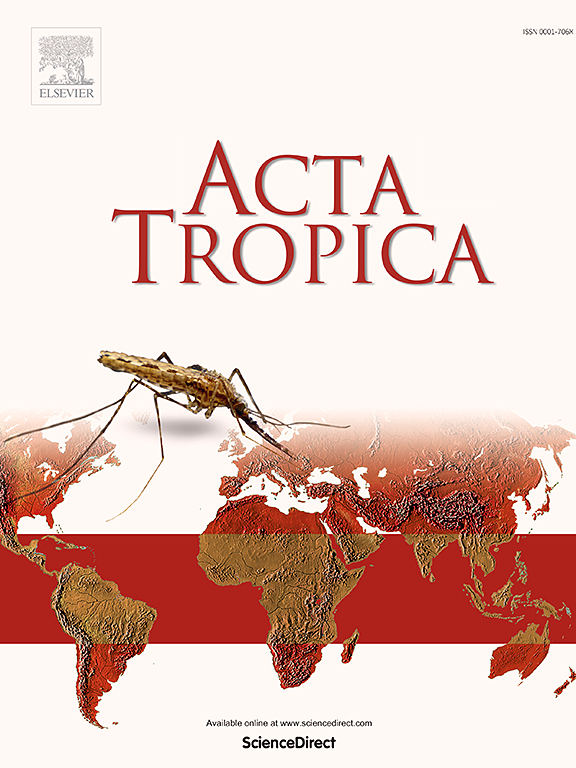Human parvovirus B19 infection in a Plasmodium vivax endemic area on the Brazil-French Guiana border
IF 2.1
3区 医学
Q2 PARASITOLOGY
引用次数: 0
Abstract
While human parvovirus B19 (B19V) infection is widespread in Brazil, over 99 % of reported malaria cases occur in the Amazon region, mainly by Plasmodium vivax. As B19V infection may contribute to anemia in children living in P. falciparum endemic areas, this study aimed to investigate the impact of B19V/P. vivax coinfection in residents of the municipality of Oiapoque, Amapá, Brazil. A total of 300 serum samples collected in 2014–2015, from individuals infected by P. vivax (n = 148) and non-infected (n = 152), were tested for B19V by serologic and molecular methods. Hemoglobin dosage and cytokine levels were evaluated by automatic method and flow cytometry/ELISA, respectively. Acute B19V infection was diagnosed in 56.8 % (84/148) of infected with P. vivax and 38.2 % (58/152) of non-infected individuals (p < 0.01), and P. vivax was considered a risk factor for B19V infection (OR=2.19; 95 % CI; p = 0.001). Participants were grouped into: B19V/P. vivax coinfected (CO), P. vivax monoinfected (M), B19V monoinfected (B19V), and endemic control (EC) who were negative for both agents. A significant association was found between the CO group and lower hemoglobin levels (RRR= 0.66; 95 % CI; p = 0.0019), but no link was found between anemia and coinfection. It was found that higher gametocyte counts (OR=1.002; 95 % CI; p = 0.0164), IL-5 (RRR=1.74, 95 % CI; p = 0.025) and IL-10 (RRR=1.45; 95 % CI; p = 0.004) levels were strongly associated with the CO group. No difference in viral load was observed between the CO and B19V groups. Our study highlights the importance of monitoring the circulation of B19V in P. vivax endemic areas.

求助全文
约1分钟内获得全文
求助全文
来源期刊

Acta tropica
医学-寄生虫学
CiteScore
5.40
自引率
11.10%
发文量
383
审稿时长
37 days
期刊介绍:
Acta Tropica, is an international journal on infectious diseases that covers public health sciences and biomedical research with particular emphasis on topics relevant to human and animal health in the tropics and the subtropics.
 求助内容:
求助内容: 应助结果提醒方式:
应助结果提醒方式:


